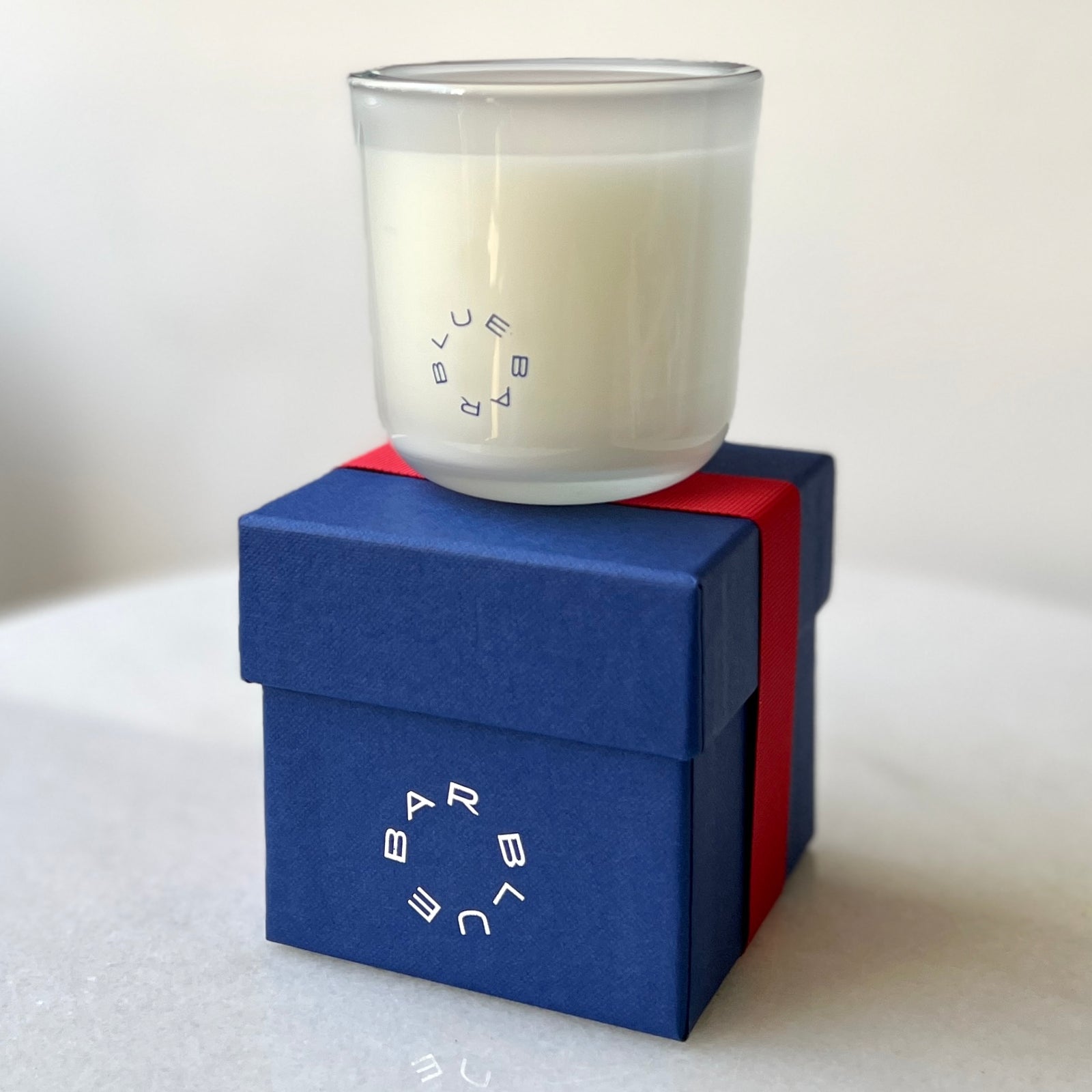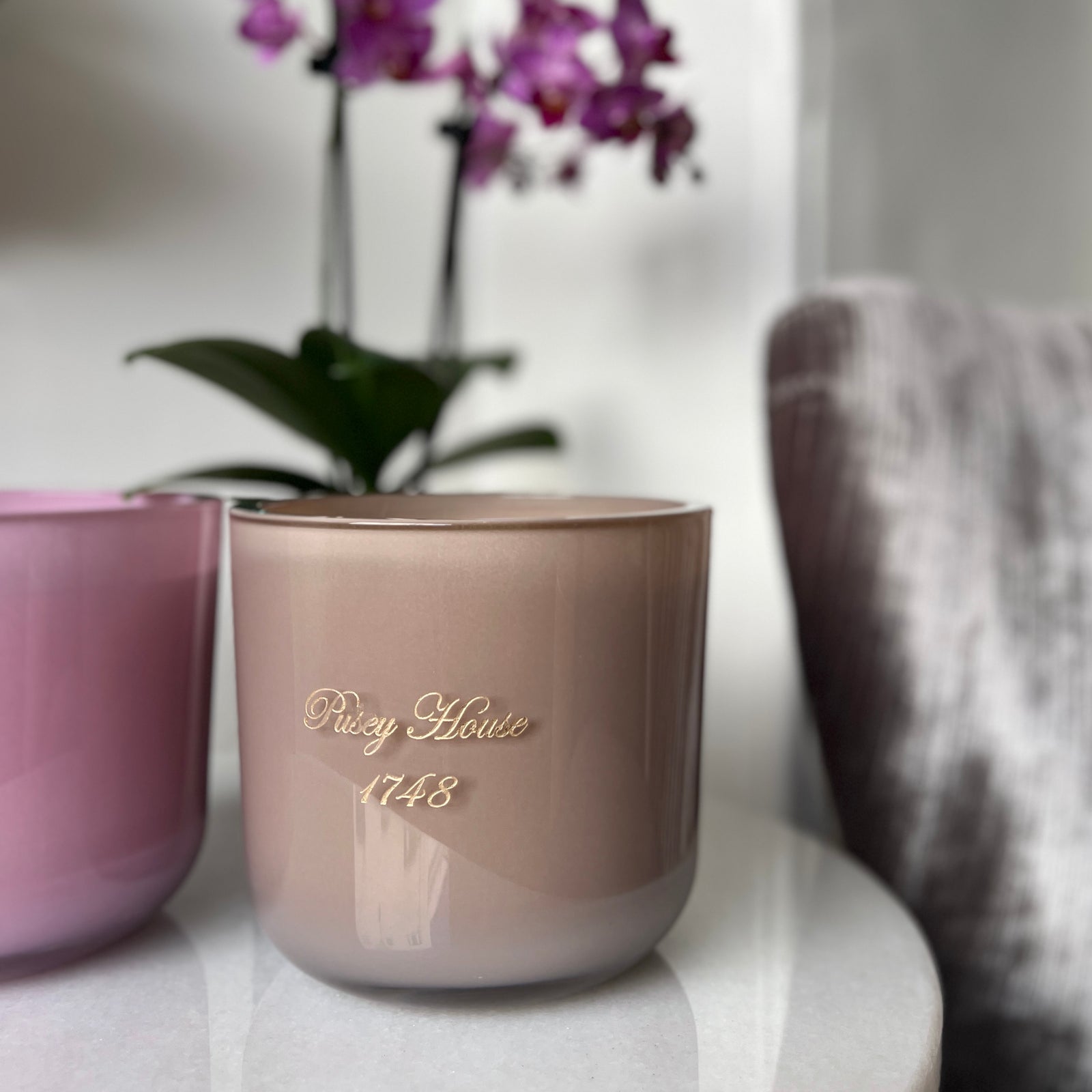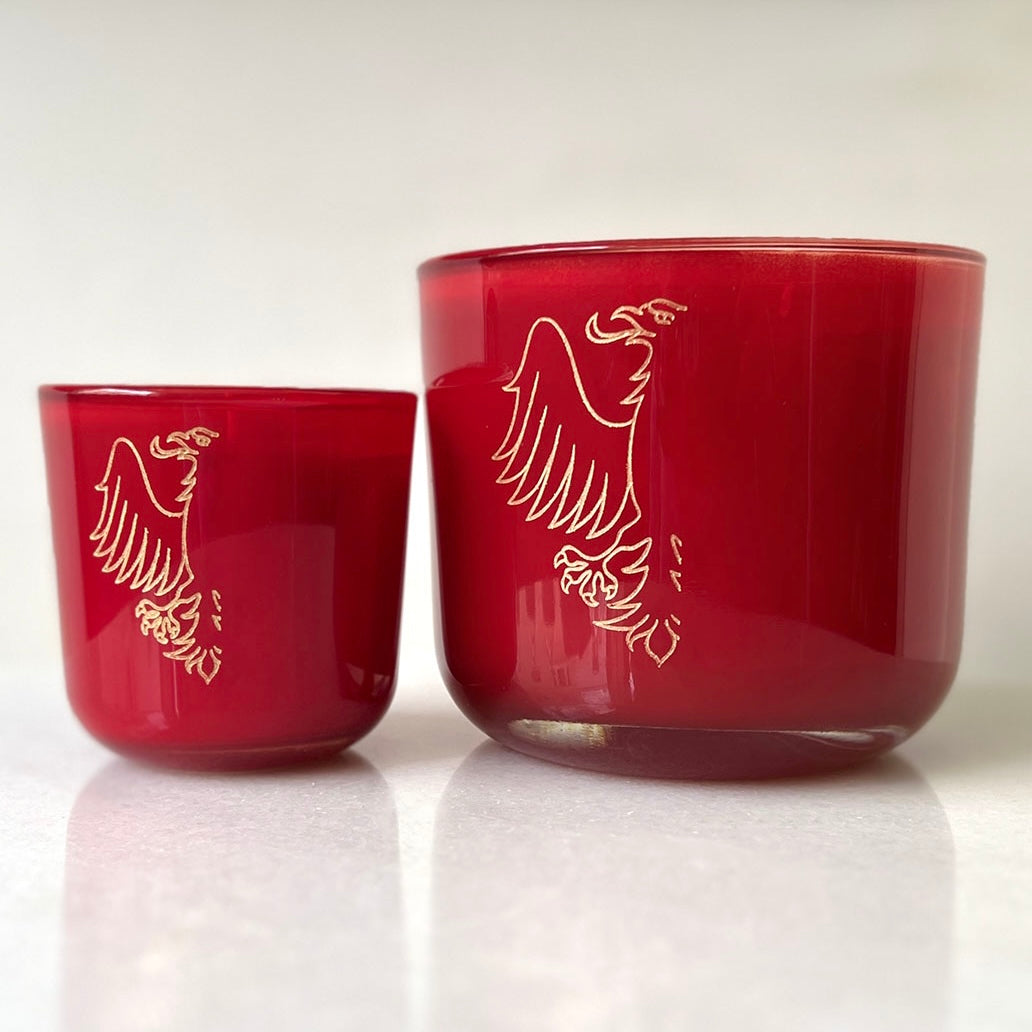Candle Etiquette
Burning Instructions
Do not burn candles for longer than 4 hours or less than 1 hour and never leave a burning candle unattended. To obtain an optimum burn always allow the entire surface of the candle to become molten as this will ensure an even burn and prevent tunnelling. Keep candles out of reach from children and animals. Keep wicks trimmed to 6mm at all times. Keep wax pool free from debris such as match ends and wick trimmings. Avoid placing a candle in a draughty area as this lends to an uneven burn. Allow your candle to solidify before re-lighting and always protect the surface on which the candle rests. To protect your candle vessel, do not burn right down to the bottom.
Cleaning Instructions
To remove excess wax, leave your vessel in a freezer overnight to allow the wax to shrink. Remove the wax, rinse the vessel with hot (not boiling) water and polish with a soft cloth. Allow the glass to return to room temperature before washing with warm soapy water. Leaving a pillow of wax (approx.10mm TCB) at the bottom of the candle will make removing and cleaning the wax easier and prevent your votive from overheating).
The Big Debate
A candle which is well made, no matter the type of wax used, should not create any smoke when burning. However, if the wick becomes too long or an air current disturbs the flame, small amounts of unburned carbon particles (soot) will escape as a visible wisp of smoke. This soot is not harmful. Any candle will soot if the flame is disturbed.
Our paraffin and natural beeswax are not hazardous to your health, do not pose any adverse effects to the environment and the burning of our candles do not emit any hazardous substances. The paraffin wax used to make our candles comes from highly refined materials and does not contain any harmful substances. This purity fulfils highest quality demands and is tested on a regular basis.
Please feel free to contact us if you have any concerns relating to the use of paraffin wax in candles.




